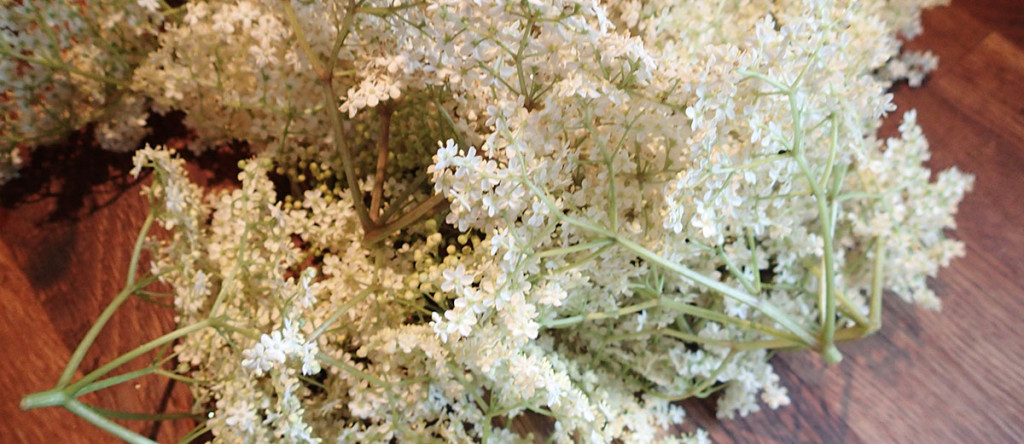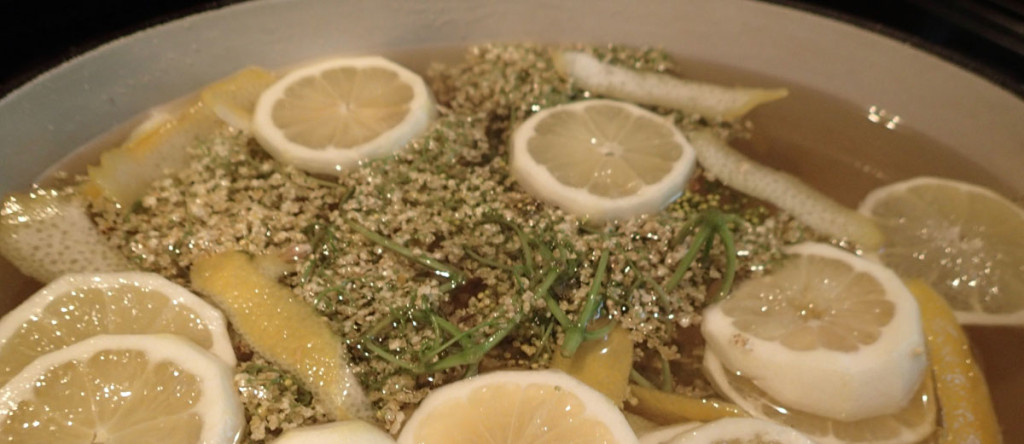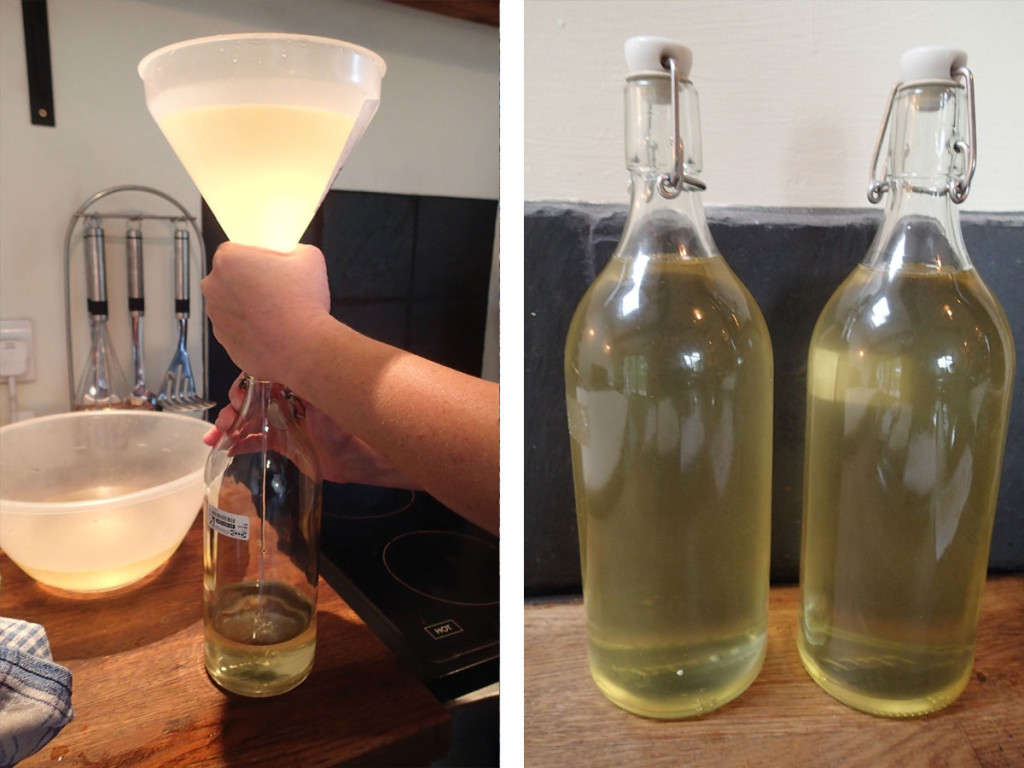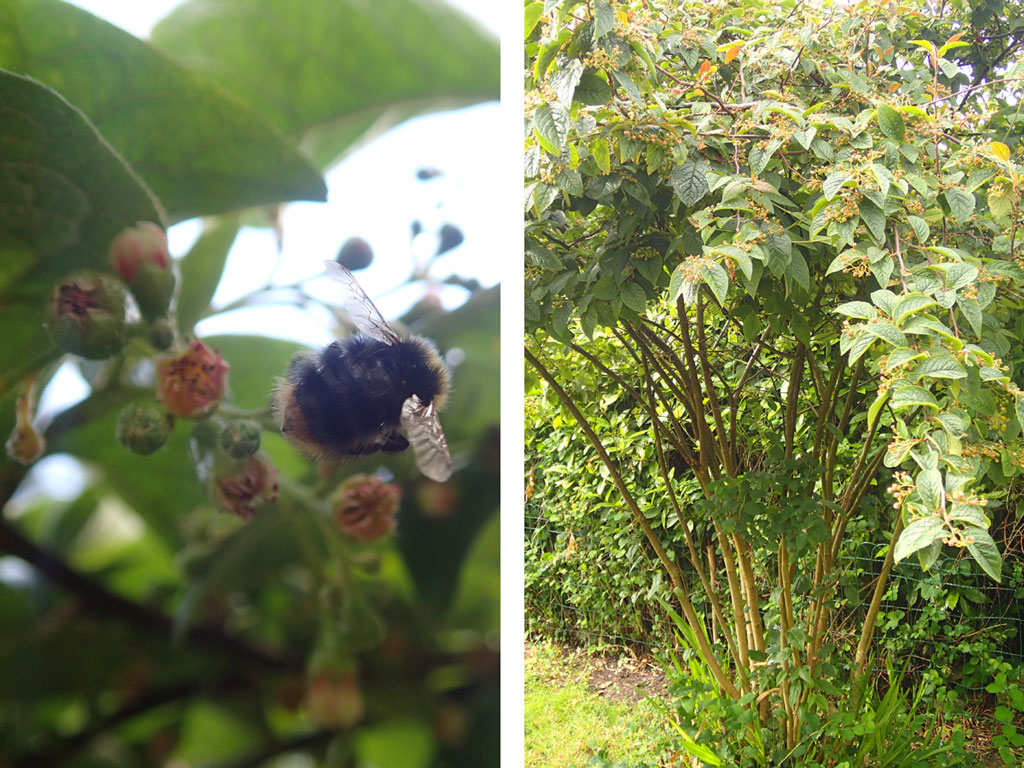I think our biggest learning so far is to plant less quantity and more variety next year. We’ve had spinach for every meal for two weeks now – Katrina even tried to feed it to me for breakfast this morning.
No.More.Spinach.

I think our biggest learning so far is to plant less quantity and more variety next year. We’ve had spinach for every meal for two weeks now – Katrina even tried to feed it to me for breakfast this morning.
No.More.Spinach.

Nothing smells more like summer than elderflower, and harvesting it to make cordial left our whole house smelling gorgeous.
We have our very own elderflower tree in the garden, so we didn’t have to race any local pensioners to collect the flowers just as they bloomed, we could wait and pick the best blooms at the perfect time – apparently on a nice dry day, early in the morning when the scent is strongest. 
The recipe we used to make our cordial is:
You can usually get citric acid from the chemists, but all of ours around here had run out. In the end we met a lady in Frome by chance who happened to have some left from a school project. David helped her carry her bags home in return for a packet of it!
First off we zested the lemons and cut them into slices, and we found a clean tea towel and some garden twine for covering the pot when we’re done. We put the sugar (it is a LOT of sugar) with one and a half litres of tap water into a great big stockpot we bought cheaply in IKEA. You have to heat the mix but not boil it, stirring to dissolve the sugar.
Once the sugar is all dissolved you can turn up the heat and get the mix boiling, and then turn off the heat. We rinsed the flowers briefly in cold tap water to remove any insects, and then dropped them into the syrup with the lemon slices, zest and citric acid. Apparently the citric acid helps to keep the cordial clear. Then we tied the tea towel around the top of the pan (instead of using the lid – it needs to be able to breath) and left it for 24 hours. 
The next day we removed the tea towel and used this to strain the syrup – you’re supposed to use muslin cloth but this did the job fine. We ladled the syrup through the tea towel into a bowl and the threw out the flowers. We sterilize the bottles we were using by washing them with soap and water, and then rinsing with boiling water and drying in the oven. 
The cordial is really tasty, especially when it is mixed with fizzy water. We froze one bottle and gave one to my Nan and Grandad, and we’ve been enjoying the others all summer!
James Wong told us to plant asparagus peas, and although I am a huge (HUGE) fan, I’m afraid this is one ‘homegrown revolution’ I could do without.
I was very excited about little bushes covered in deep red flowers followed by mini asparagus-flavoured delicacies popping up in my garden.

Unfortunately, the reality is a couple of stringy stalks, a scarce spattering of tiny flowers and fairly tasteless little peas.
We’ve tried boiling, steaming, frying and eating these raw, but they really don’t taste of much. Fried with courgettes was best (slight nutty flavour, maybe?) but they take ages to slice into tiny x-shaped pieces of vegetable confetti – its hardly worth the effort.
I think this is one crop we’ll give a miss next year!
We have no idea what this tree is – it grows like mad (we cut it back twice before the spring) and in May it had tiny flowers all over it that never opened. Now the flowers have turned into little red berries. The bees absolutely love it and some days you could hear the buzzing of hundreds of bees when you were the other side of the garden. Any idea what it is? Free courgette to the first person to get the answer!

We are both really enjoying our garden and have spent every spare moment in it this year, so when it came to thinking about our wedding it seemed like a natural decision to make our garden part of it.
So – we’re growing our decorations…
We’re using an autumn harvest theme, so we’re growing colourful popcorn, gourds, squash pumpkins, some sunflowers (maybe?!) and we’re also planning to use apples, leaves and berries from around the garden.
Fingers crossed that everything is ripe at the right time!